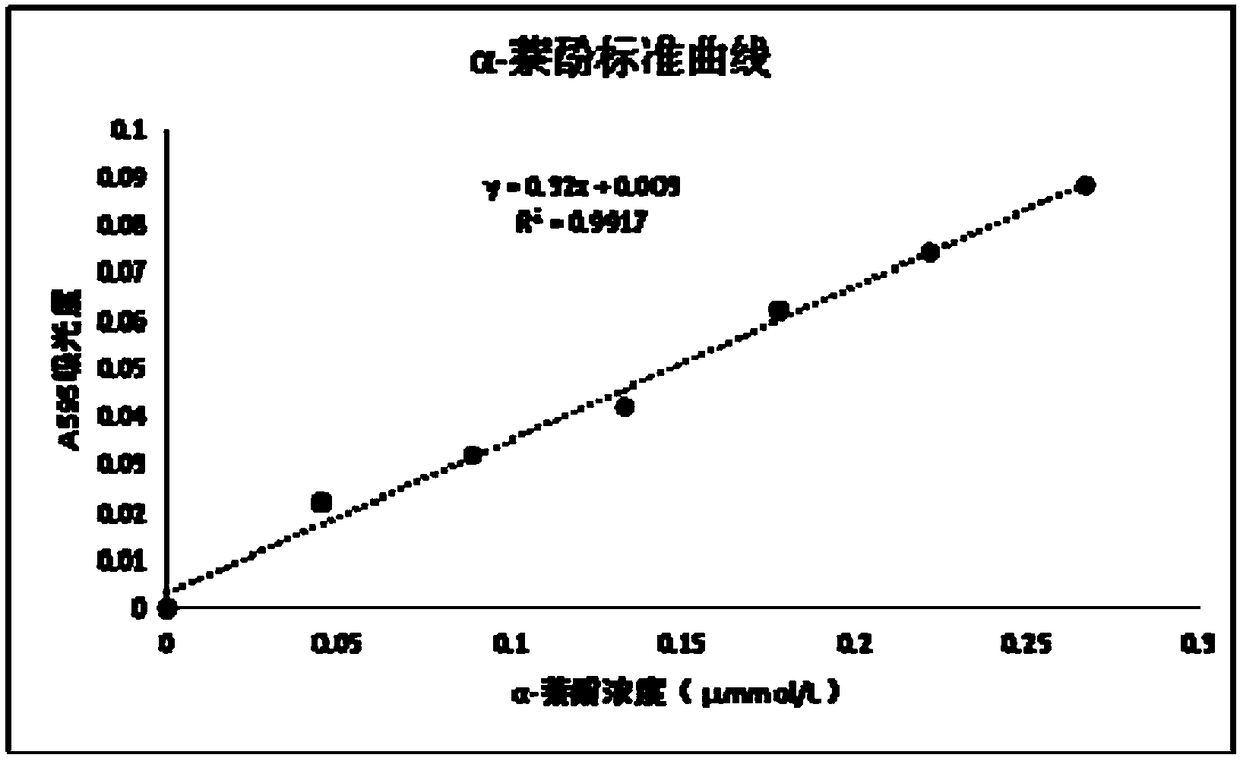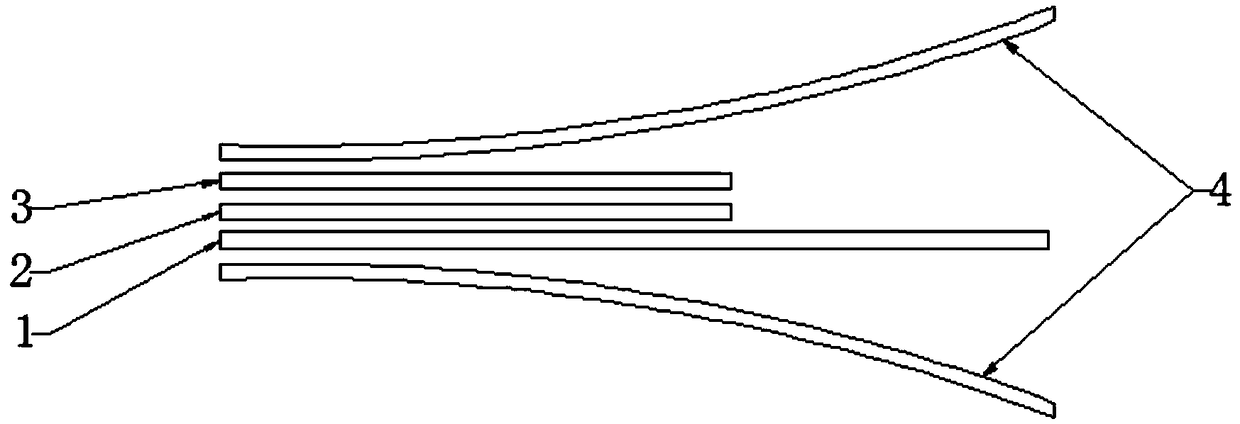Extraction method of mixed colored cowpea esterase and application of mixed colored cowpea esterase in detection of organophosphorus pesticide residues
An organophosphorus pesticide and extraction method technology, applied in the field of pesticides, can solve the problems of high detection cost and difficulty in obtaining materials, and achieve the effects of easy acquisition, convenient extraction, and rapid detection and detection.
- Summary
- Abstract
- Description
- Claims
- Application Information
AI Technical Summary
Problems solved by technology
Method used
Image
Examples
Embodiment 1
[0061] 1.1 Experimental materials and reagents
[0062] Cowpea (Taobao), 0.1mol / L, pH 6.5 phosphate buffer, 0.04mol / L, pH 6.5 phosphate buffer, α-naphthyl acetate (chemically pure), absolute ethanol (chemically pure), Fast Blue B salt (chemically pure), ammonium sulfate (chemically pure), distilled water, 1mmol / L α-naphthol absolute ethanol standard solution (chemically pure), α-naphthyl acetate acetone solution: 0.016mol / L: use acetone (99% ) preparation, stored in the dark at 4°C, Coomassie brilliant blue reagent, bovine serum albumin, NaCl solution
[0063] 1.2 Reagent equipment
[0064] (1) Substrate sheet dripping liquid equipment
[0065] Dissolve 14.8mg (0.014g) of acetic acid-α-naphthyl ester in 50mL of acetone, which is the substrate tablet drop solution.
[0066] (2) Chromogenic solution equipment
[0067] Dissolve 15.6mg (0.015g) of Fast Blue B salt in 10mL of distilled water and shake for 30min at a rate of 180 times min to obtain the chromogenic solution.
[...
PUM
 Login to View More
Login to View More Abstract
Description
Claims
Application Information
 Login to View More
Login to View More - R&D Engineer
- R&D Manager
- IP Professional
- Industry Leading Data Capabilities
- Powerful AI technology
- Patent DNA Extraction
Browse by: Latest US Patents, China's latest patents, Technical Efficacy Thesaurus, Application Domain, Technology Topic, Popular Technical Reports.
© 2024 PatSnap. All rights reserved.Legal|Privacy policy|Modern Slavery Act Transparency Statement|Sitemap|About US| Contact US: help@patsnap.com










